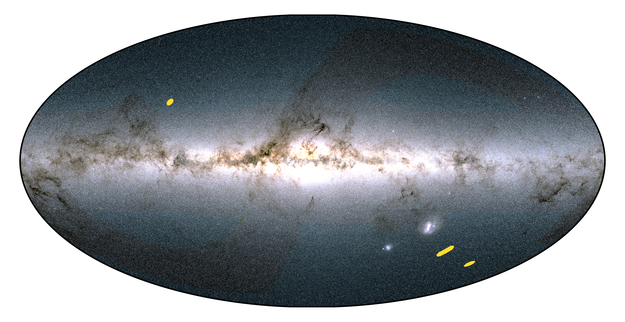How to analyse data from galaxy spectroscopic surveys without assuming a cosmological model

Euclid is an ESA mission to map the geometry of the Universe and better understand the mysterious dark matter and dark energy, which make up most of the energy budget of the cosmos. The mission will investigate the distance-redshift relationship and the evolution of cosmic structures by measuring shapes and redshifts of galaxies and clusters of galaxies out to redshifts ~2, or equivalently to a look-back time of 10 billion years. In this way, Euclid will cover the entire period over which dark energy played a significant role in accelerating the expansion of the Universe.
From Earth’s surface, conducted on the Mayall 4-meter telescope at Kitt Peak National Observatory, the Dark Energy Spectroscopic Instrument (DESI) is obtaining optical spectra for tens of millions of galaxies and quasars, constructing a 3D map spanning the nearby universe to 11 billion light years.
Euclid and DESI are two of the spectroscopic class of large-scale optical and infrared surveys that, in coming years, will map our Universe from the present epoch up to when it was roughly one tenth of its current age with unprecedented accuracy. Euclid’s NISP instrument, for example, will provide us with spectra for large samples of sources. Such spectra will not only enable deep insight into the physics of those objects, but it will also yield accurate estimates of their redshift and thus of their distance to the observer. The result will be a precise statistical characterization of the apparent spatial distribution of those luminous tracers. This map should shed precious light on open topics such as the nature of dark energy, the possible interplay of dark energy and dark matter, the mass hierarchy of neutrinos, or possible deviations of gravity from general relativity, to name a few.
At the same time, a different family of surveys will scan the sky at greater depths with optical filters and exquisite image quality. These photometric experiments build very large and high-quality source catalogues, with, however, relatively rough redshift estimations given their moderate number of filters.
An intermediate, third class of experiments also exists. These are the spectro-photometric surveys that conduct standard photometry in a relatively large set of narrow-band optical filters. This strategy combines the indiscriminate character of the photometric surveys with high precision redshift estimates for a large fraction of the detected sources.
Those are a lot of raw data. In order to extract information from them, new statistics of the distribution of matter need to be explored. A case on point is the customary conversion of redshift estimates into radial distances under the assumption of a given fiducial cosmological model. Angular and redshift coordinates are thus converted into 3D space, where standard 3D clustering analysis techniques are applied.
Now, a team of researchers takes a different approach 1. They focus on a new cosmological observable, namely the angular redshift fluctuations (ARF), and explore how ARF will provide complementary cosmological information compared to traditional angular galaxy clustering. ARF are sensitive to the variation of matter density and velocity along the line of sight, while galaxy density is sensitive to the average or monopole of matter density and velocity in the same redshift range.
One could wonder why angular observables (2D) might be preferred over standard 3D ones. Probably the main reason is that you do not need to assume any fiducial cosmological model to analyse the data. This means that angular observables may be directly compared with theoretical predictions without any intermediate data manipulations that hinge on an assumption of which the implications in the analysis may not always be clear.
The researchers applied the Fisher formalism to the angular galaxy clustering, the ARF, and the cosmic microwave background (CMB) lensing convergence observables, and calculated their sensitivity to cosmology in two different observational setups, mimicking those expected for the DESI and Euclid surveys.
The scientists find that the tomographic analysis of ARF retrieves more information than the tomographic analysis of the angular galaxy clustering. Also, that combining angular galaxy clustering with ARF provides tighter constraints on the galaxy bias parameters compared to the combination of angular galaxy clustering with CMB lensing.
Interestingly, the team did not consider massive neutrinos in their analysis. As the growth rate is particularly sensitive to them, we can expect ARF to be a powerful tool to constrain the mass of neutrinos.
A massive wave of excellent-quality, extremely large data sets that is coming in the next years. The combination of techniques and observables should work jointly on the efforts of identifying and mitigating systematics, and pushing our knowledge of cosmological physics to its limits.
Author: César Tomé López is a science writer and the editor of Mapping Ignorance
Disclaimer: Parts of this article may have been copied verbatim or almost verbatim from the referenced research papers.
References
- L. Legrand, C. Hernández-Monteagudo, M. Douspis, N. Aghanim and Raúl E. Angulo (2021) High-resolution tomography for galaxy spectroscopic surveys with angular redshift fluctuations Astronomy & Astrophysics doi: 10.1051/0004-6361/202039049 ↩